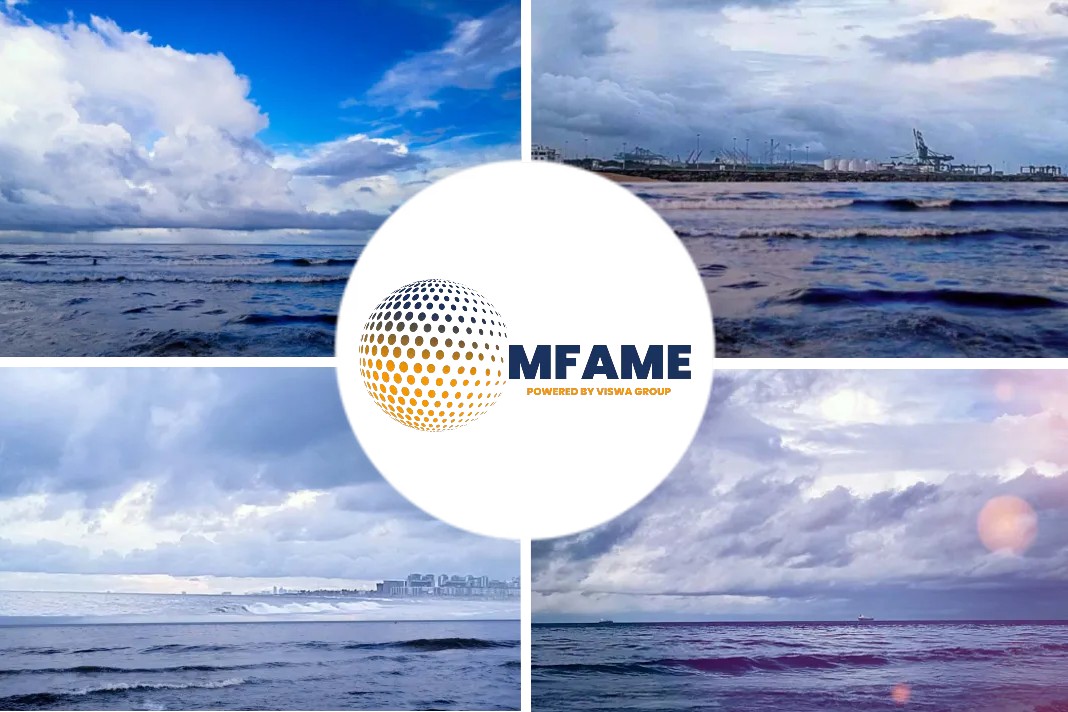Maersk Supply Service expects that after a challenging 2015, and the same in 2016 and 2017, but says that no year will be as tough for the oil and gas sector as 2018.
2018- toughest year
The company is, like many other shipping companies servicing offshore, in the midst of a large-scale strategic change in a sector where many players are now looking toward ocean wind and mineral extraction.
But even if the new initiatives are not successful, the once profitable income source from the oil and gas sector will need to improve significantly before Maersk Supply Service, which Maersk has been working to spin off from the core group since 2016, can get back to the earning levels seen in 2014 – before the oil price plunged, says Chief Strategy Officer Jonas Agerskov in an interview with ShippingWatch.
He points to four business areas that will contribute significantly to the company’s earnings in the years to come. “In 2020 one third of our revenue will come from new business areas and activities beyond oil and gas,” Agerskov tells ShippingWatch: “Oil and gas represent an important part of our business, but we must never end up in the same situation again, where we’re 100 percent exposed to oil and gas, as we were in 2015 to 2017.” (Article continues under after photo)
Demand likely to come
The chief strategy officer declines to specify what the top line is expected to look like in 2020. For this year, one fourth of revenue is expected to come from new business areas.
“The precondition for getting revenue back to the level seen in 2014 is that we’re successful with many of the initiatives we’re working on. But also that the oil and gas sector gets up and running again. The new initiatives can’t stand on their own,” says Agerskov.
The ambition to broaden the business is part of a strategy Maersk Supply Service has been working on since late 2016, and which is a result of factors including management’s expectation that global demand for oil will soon peak.
“We believe that the demand peak will happen sometime in the mid-2020s. The oil and gas market will still be a big market, it just won’t be the same in the future,” says Agerskov.
The chief strategy officer splits the 33 percent of the revenue, which Maersk Supply Service will bring in from elsewhere by 2020.
The new company has previously told ShippingWatch that there will be jobs totaling USD 50 billion over the next eight years in the North Sea alone, and that it expects to control one tenth of this market in the years to come. Maersk’s new offshore venture will take 10 percent of billion dollar market.
Steps into green energy
Ocean wind, including a cooperation with Vestas, is the project, which covers installation of wind turbines with OSV vessels, which is still at a test stage.
But Maersk Supply Service expects to have a final solution ready to go to market by late 2020.
Deep sea mining
Finally, deepwater extraction of raw materials, so-called deep sea mining, and work to clean up the world seas, removing elements such as plastic, will feature among the areas the company bets on going forward.
“Decommissioning will contribute significantly to our revenue. For ocean wind, this year we completed our first walk to work contracts (service and operating jobs, -ed.), and we’ve launched our innovation partnership with Vestas. There’s a lot of value in that sector,” says Agerskov:
“Then there’s deep sea mining and ocean clean up, which are two long-term bets on industries that will hopefully materialize in the next two to five years.”
Several new players in the Norwegian sector, are also looking toward ocean wind and deep sea mineral extraction.
Denmark’s Esvagt will also try to get more of its revenue from ocean wind in the coming years. Early this year, the shipping company secured financing to acquire new offshore wind service vessels.
The Only one offshore company
A higher oil price, currently hovering at the highest level since the end of 2014, and large profits from the oil companies have yet to result in a profitable improvement for many offshore shipping companies.
Numerous offshore shipping players beyond Maersk Supply Service have reported deficits this year so far.
Norwegian media Sysla recently reported that just one of the five biggest offshore shipping companies listed in Norway reported a profit for the second quarter of the year.
New Maserk fleet
For Maersk Supply Service, revenue dropped USD 4 million in the second quarter, to USD 70 million, showed the Maersk Group second quarter interim report, published in August. The company’s operating result (EBITDA) for the period was negative at USD 3 million.
Maersk Supply Service, which had 11 ships idled in the second quarter, has also disposed of ships.
The company has also taken delivery of new ships as part of fleet newbuild program launched back in 2014. Maersk Supply Service has nine new vessels on the way this year “In the last three or four years, we’ve divested more than 25 ships, which is a considerable part of the fleet. There’s still a lot of overcapacity, and it could help the situation if some of the stacked and older tonnage leaves the market.”
While Maersk Oil and Maersk Tankers have been sold, and Maersk Drilling is expected to be listed separately during next year, the group has yet to find a solution for Maersk Supply Service, for which it had originally hoped to find a solution before the end of 2018.
Did you subscribe for our daily newsletter?
It’s Free! Click here to Subscribe!
Source: Shipping Watch

















